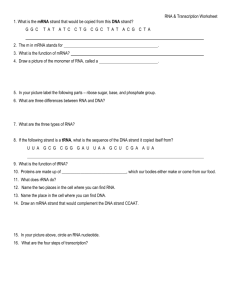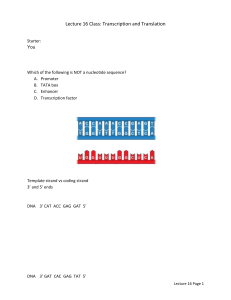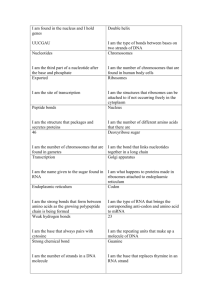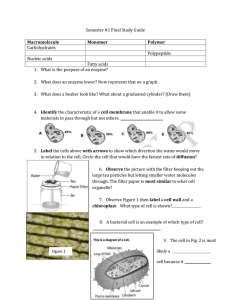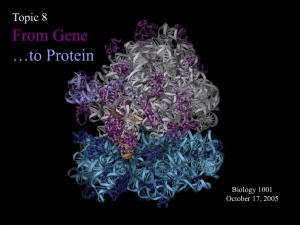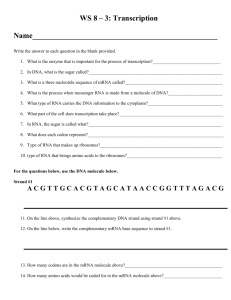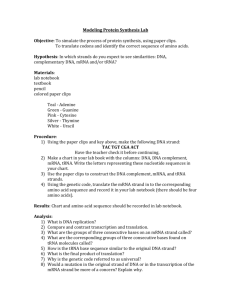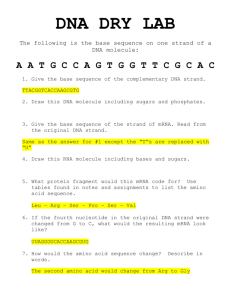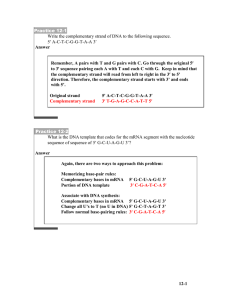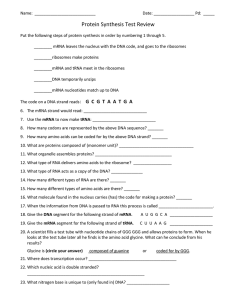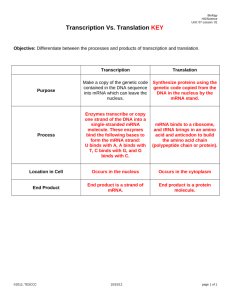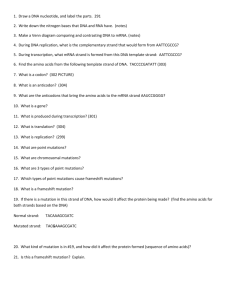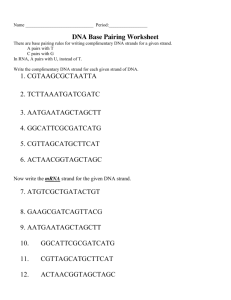Biol 1001 review questions for midterm #2
advertisement
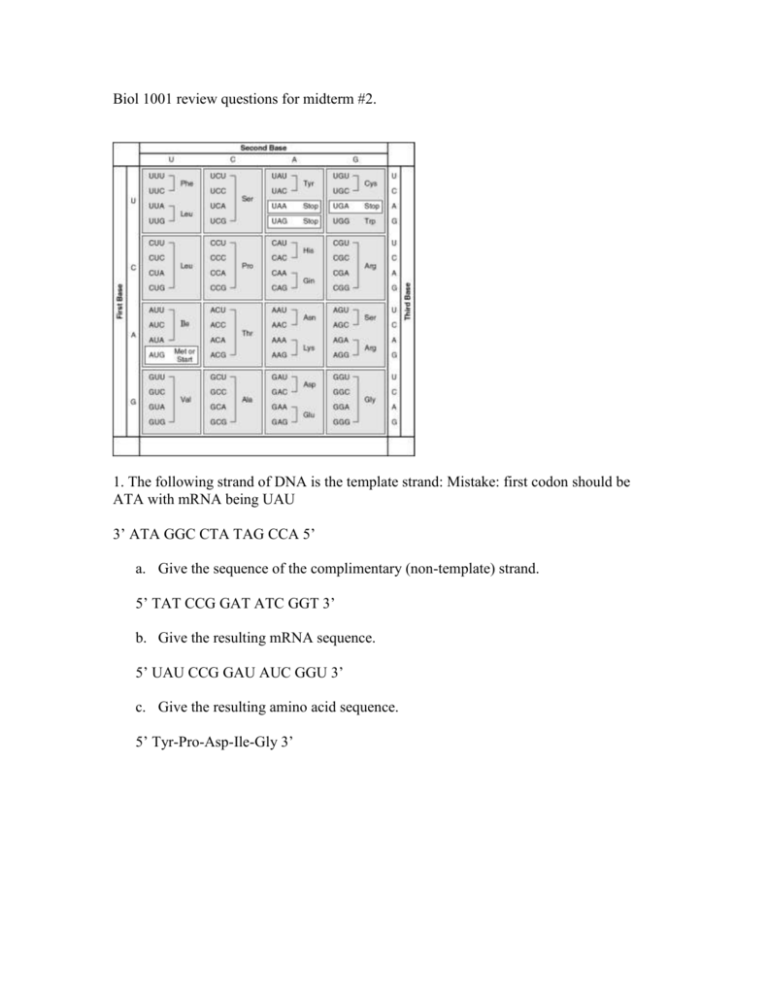
Biol 1001 review questions for midterm #2. 1. The following strand of DNA is the template strand: Mistake: first codon should be ATA with mRNA being UAU 3’ ATA GGC CTA TAG CCA 5’ a. Give the sequence of the complimentary (non-template) strand. 5’ TAT CCG GAT ATC GGT 3’ b. Give the resulting mRNA sequence. 5’ UAU CCG GAU AUC GGU 3’ c. Give the resulting amino acid sequence. 5’ Tyr-Pro-Asp-Ile-Gly 3’ 2. Answer Questions #1-3 for the following DNA sequence (template strand): 3’ TTA TAG CGC GAT ACG ACT 5’ Comp strand: 5’ AAT ATC GCG CTA TGC TGA mRNA: 5’AAU AUC GCG CUA UGC UGA 3’ amino acids: 5’ Asn-Ile-Ala-Leu-Cys-Stop 3’ 3. What is the genetic material of the HIV virus? RNA 4. What is the genetic material of the influenza virus? RNA Essay questions: 5. Explain what is meant by symbiosis. What are the three types of symbiotic relationships? -when two organisms have a relationship or live together. The host is the larger organism and the symbiont is the smaller one. Mutualism: Both organisms benefit, e.g. E.coli in our intestines Commensalism: One benefits and the other is neither harmed or benefits. E.g. bacteria on our skin Parasitism: one benefits, one is harmed, parasite eats the cells and fluids of host e.g. TB 6. What is a frameshift mutation and what would be the resulting effect on the amino acid sequence? A mutation (an insertion or deletion) that causes the reading of the mRNA to change. The codons aren’t read in the proper groupings. Every triplet becomes grouped differently. Result: new sequence of amino acids and non-functional protein. Multiple choice 1. Which of the following is (are) true for anabolic pathways? a. They do not depend on enzymes b. They are usually highly spontaneous chemical reactions. c. They consume energy to build up polymers from monomers. d. They release energy as they degrade polymers to monomers. 2. The nitrogenous base adenine is found in all members of which group? a. proteins, triglyceride, testosterone b. proteins, ATP and DNA c. ATP, RNA and DNA d. Alpha glucose, ATP and DNA e. Protein, carbohydrates and ATP 3. A particular triplet of bases in the template strand of DNA is 5’AGT3’. The corresponding codon for the mRNA transcribed is a. 3’ UCA 5’ b. 3’ UGA 5’ c. 5’ TCA 3’ d. 3’ ACU 5’ Use the diagram to answer the following questions: 1. Which of the following represents ΔG of the reaction? a. a b. b c. c d. d e. e Would this be the same or different in an enzyme-catalyzed reaction? YES 2. Which of the following represents the activation energy required for the enzymecatalyzed reaction? e. a f. b g. c h. d i. e


